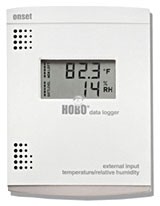
Q&A: Key to Cultural Heritage, July 22
You are invited to join MAS, Heritage Saskatchewan, and memoryKPR for a Q&A session about our new summer initiative “Key to Cultural Heritage”. Tuesday July 2212:00pm – 1:00pm CSTOnline, via
As a summer conservation series, we will be talking about the Agents of Deterioration as defined by the Canadian Conservation Institute (CCI) in Ottawa. If you want to learn more about CCI, see their website or our April 29th blog post.
This week we are talking about our first agent of deterioration, Incorrect Relative Humidity. Relative Humidity (RH) is something we all know about. We feel the effects in our skin on the dry Prairies. We can see it in our furniture at home. Wood furniture contracts and splits due to this “dryness” (or in conservation speak “Incorrect Relative Humidity”).
CCI has outlined that there are 4 situations that are deemed “incorrect” for our objects in terms of relative humidity:
1. Damp. Above 75%
2. Relative Humidity fluctuations
3. Relative Humidity above or below a specific critical value
4. Relative Humidity above 0%
Let’s breakdown each of these categories.
1. Damp. Above 75%.
When conditions are above 75% RH, water might be present and the potential for mould exists. If you have taken MAS’s course on Mould Management and Remediation, you know how bad mould can be. Mould can cause health problems to those working around it; mould slowly decomposes and discolours artifacts. 75% RH can also cause rusting of metals in your collection.
2. Relative Humidity fluctuations
It can be a general misconception that seasonal fluctuations are the worst thing that could happen to your collection. In fact, it is possible that extreme daily fluctuations that your artifacts are undergoing can be just as bad or even worse (and are the ones more commonly missed in my opinion). RH

fluctuations really affect organic materials (such as paper and leather) when they are in combination with other materials that are not compatible with them (like metal or a photo emulsion layer). This photo to the right is made of at least two different materials; they do not expand or contract at the same rate causing the curling you see.
3. Relative Humidity above or below a specific critical value
This one is a tricky one. Certain materials react poorly to certain humidity percentages; for example, in unstable glass (poorly made glass) it begins to “sweat” or release droplets of water at about 55% RH. Therefore, you try to keep it out of that range of humidity. Other minerals or items in your collection may react similarly.
4. Relative Humidity above 0%
Seems like a bit of a weird category to have, however, what CCI means by this is that the presence of water vapour/moisture does also contribute to the breakdown of materials no matter how much of it there is. Moisture is required during the process of decomposition, specifically in acidic breakdown of materials such as newspapers and acetate film. Often in those cases you are just warding off the eventual loss of those objects.
Other Important Notes
It is important to note that relative humidity is directly related to temperature. You cannot control/change relative humidity without considering/changing the temperature (as temperature increases relative humidity decreases and vice versa).
There can be several sources for humidity/lack of humidity in your collection. Climactic conditions play a very large role. You may also need to evaluate your building to ensue that water issues do not become a major problem; possible problems could include poor drainage and using problem areas (such as near a heater which would decrease humidity locally).
How do we correct for incorrect relative humidity?
There are several steps to take. Firstly, find a way to measure where you are at in terms of humidity. MAS has an Environmental Monitoring Equipment Loan Program where you can borrow equipment that will measure and record your relative

humidity and temperature. All you have to do is ask for it! Secondly, knowing what a problem area is and avoiding it is important. If you can’t avoid it, come to a compromise and place materials in it that aren’t as affected by those conditions is an option. Properly storing your artifacts aids in controlling the changes in relative humidity; storing archival materials in proper boxes helps buffer them from changes in the environment. Using a humidifier or a dehumidifier (depending on the situation) will help control or maintain the environment for your artifacts as well.
Relative humidity can be a quite complicated topic; one blog post won’t cover it all. If you have any questions or want to discuss specific situations, don’t forget that you call me anytime at the MAS office (306-780-9266).
Resources:
This blog post was a summary of the CCI page concerning the Agent of Deterioration Relative Humidity. Original page can be seen here.

You are invited to join MAS, Heritage Saskatchewan, and memoryKPR for a Q&A session about our new summer initiative “Key to Cultural Heritage”. Tuesday July 2212:00pm – 1:00pm CSTOnline, via

MAS Reading Group – Summer 2025 (6 sessions) THE MUSEUM ACCESSIBILITY SPECTRUM: Re-Imagining Access and InclusionEdited by Dr Alison F. Eardley and Vanessa E. Jones, 2025 by Routledge https://saskmuseums.org/wp-content/uploads/2025/06/9781040309018.pdf The

424 McDonald St, Regina SKand Online via Zoom Do you have summer students coming to work at your museum? Let MAS help them hit the ground running! Learning opportunities and